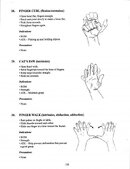ScubaInChicago
Contributor
I would recommend working on the heart! there are many physiological things happening. Good blood circulation through capillaries, efficient off gassing through pulmonary/circulatory system, reduced Nitrogen in slow compartments (i.e. fat), reduced C02 production, among other things that make a healthy diver.
I would also give the idea of sidemount diving some extra thought if you have the luxury of a tank monkey.
I would also give the idea of sidemount diving some extra thought if you have the luxury of a tank monkey.





